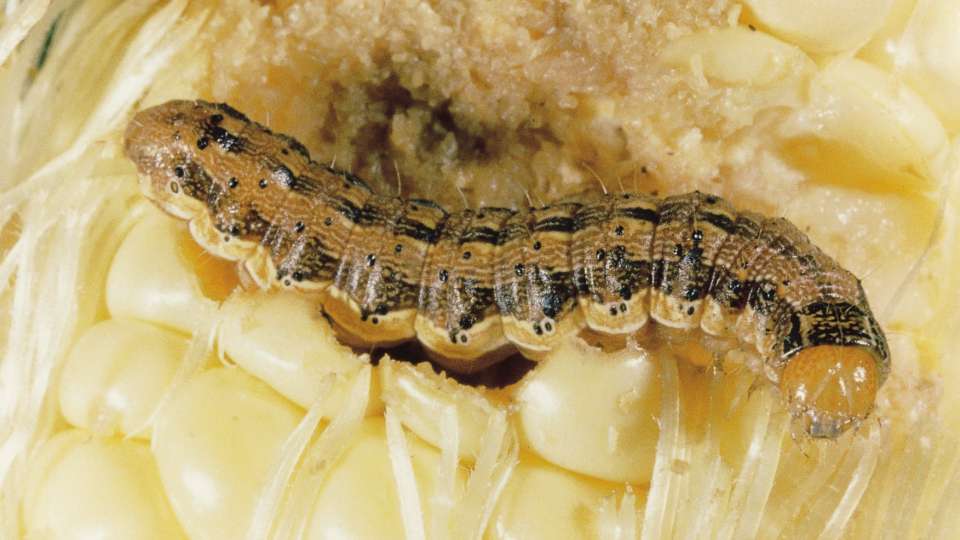Insects And Diseases In 2016: Early Planting, More Stress
First, the good news: If we consider all the issues growers and retailers are facing right now — low commodity prices and horrendous weed problems top the list — insect and disease pressures are a piece of cake.

Scott Stewart, University of Tennessee
“We don’t have any giant looming insect threats out there that we can’t handle,” Dr. Scott Stewart, Professor of Entomology and IPM Extension Specialist with the University of Tennessee, tells CropLife® magazine. “For diseases, there is nothing new we can’t manage. We kind of know what to expect. There is a problem with insecticide availability, and a couple of new pests, but I think we can handle them … I’m not sure that’s true for weeds.”
Now for the concerns for 2016 on disease and insect management.
One of the things Dr. Gary Fellows, Manager Technical Marketing, BASF, took away from last month’s Commodity Classic was just how far genetics are pushing yield limits. “It was amazing sitting at the National Corn Growers Association Yield Contest — the new winner was 532 bushels per acre. It’s unbelievable that genetics can do this with corn.”
The upshot of pushing plants to the max? “Stressed plants tend to get disease, and need some help … The biggest change (from last year) is with the early planting and seedling disease time. If we plant and push our soybeans and corn early, that’s going to be bigger stress,” he says.
Fellows, echoing most others, expects planting will probably come sooner this year. Cooler soils mean slower germination and consequently, heavier influences of seed diseases like Pythium and Rhizoctonia, so growers will need to be on the lookout.
Not surprisingly, much of what we might see in 2016 will depend on weather patterns early and mid-summer, says Dr. Tamra Jackson-Ziems, Associate Professor with the Plant Pathology Department at the University of Nebraska. Ideal conditions caused Northern corn leaf blight to proliferate last season, as well as gray leaf spot as the summer progressed.
“Fungi overwinter on residues, so it’s likely that the fungi is still there and that we’ll see it again. We had favorable conditions in 2014 and 2015 because of the extra moisture. If temperature and moisture are favorable in 2016, it could happen again — especially if hybrids are susceptible,” she says.
It is important that growers position hybrids that are resistant to manage diseases, but unfortunately, many already placed orders for seed orders for 2016. She adds that selecting disease-resistant hybrids is one way to reduce input costs in the current corn price doldrums. “On top of that, they can use foliar fungicides, crop rotation, or even tillage to reduce disease this year.”
Northern corn leaf blight hit Nebraska so early last season that it took farmers off guard, says Jackson-Ziems. “They weren’t ready. We learned quickly some hybrids are much more susceptible than others.”
What strikes BASF’s Fellows is the potential for another big outbreak of Northern corn leaf blight in 2016. Last year’s outbreak arrived three weeks earlier than normal in Iowa, and the sheer abundance of the disease meant a tremendous amount of inoculum was left on the crop residue in the soil to overwinter. “Since we did have a very open and fairly mild winter in the Midwest, we can’t guarantee it, but I would certainly expect the potential for high disease pressure is going to be here again. Genetically, the corns haven’t changed much,” he points out, adding that in-furrow fungicides will help plants stressed by cold conditions get out of the ground and protect against disease.
Fellows advises vigilance in scouting for lesions, especially heading into June. “The problem with plant diseases is once they kill part of the leaf or cause dead spots, that part of the leaf is no longer going to function. If you knock leaves off the plant that means the plant cannibalizes the stalk later in the year and you wind up with more lodging later on.” During the V14-to-V18 vegetative stage is the time to come in with a fungicide, such as Priaxor from BASF. If the disease doesn’t show up until tassel time, switch over to Headline AMP, a strobilurin-triazole combo, he says.
For soybeans, he sees similar disease pressure to last year in the Midwest. Pushing planting earlier is advantageous to soybean yields, with the goal being to get the biggest plant possible prior to the switchover from the vegetative to reproductive stage. At the same time, legumes don’t do well in stressful soil conditions, so an in-furrow treatment like Priaxor in addition to seed treatment will offer disease protection as well as plant health benefits.
An Inexact Science
Insect pest forecasting is an inexact science, says Christa Ellers-Kirk, Senior Research Scientist, BASF, and there is much to take into account, including the health of the overwintering population of insects in a given region, the health of their overwintering host (if there is one), weather patterns, and migratory species which are frequently influenced by the jet stream, she says. Accordingly, it is too early to estimate the impact of insect pests for 2016, but if the warmer temperatures continue, overwintering corn rootworm eggs will hatch sooner.
“What this could mean is we’ll have corn rootworm larva feeding on smaller corn roots. That could diminish the corn’s ability to recover from feeding damage. This is definitely something to watch out for,” she tells CropLife.

Corn earworm might be seen moving into corn sooner than normal because of the warmer weather.
Corn earworm might also be seen moving into corn sooner than normal because of the warmer weather. The pest hitches a ride north to the Midwest on the Gulf Stream, so movement is highly dependent on weather conditions and airstream.
One factor to consider: Growers in cost-cutting mode are increasingly planting cheaper conventional seed, which obviously does not convey resistance to insects, says Dr. David Kerns, Associate Professor of Entomology at Louisiana State University.
“Those (conventional lines) stand a chance of producing more corn earworms. With the warmer winter we’ve had, I’m hearing reports from southern Louisiana of a lot of sugarcane borers successfully overwintering in sugarcane, and sugarcane borer is a significant corn pest as well,” Kerns says.
In soybeans, the soybean aphid is the pest to watch, particularly if temperatures stay below 90 degrees. Multiple populations can feast on crops in a year, and if that happens, rotating your mode of action — a pyrethroid followed by an organophosphate, for example — is key, BASF’s Ellers-Kirk says.
A low level of pyrethroid resistance was seen in 2015 along the southwestern Minnesota and northwestern Iowa border, which makes rotating of modes of action in the field even more crucial.
The trigger for application is 250 aphids per plant in 80% of your field, says Ellers-Kirk, adding, “If you have a couple of soybean aphids in your fields, pretty soon that couple is going to turn into hundreds, and then thousands, so there is a need to be scouting. Really conferring with your local extension agent is your best way to go.”
The Section 18 Wait
University of Tennessee’s Stewart expects the sugarcane aphid issue in grain sorghum to be as bad or worse as last year. However, in Tennessee, the current unfavorable economics for growing sorghum will mean only about 25,000 acres are planted there this year, a steep drop from last year’s 125,000 acres, he says.
Most Southern states are submitting Section 18 exemption requests for the cancelled sulfoxaflor, the active ingredient in Transform from Dow AgroSciences, which had been growers’ top choice to manage the pest. The only suitable alternative to Transform is Bayer CropScience’s Sivanto, which has a pre-harvest restriction of 21 days compared with 14 days for Transform. “With these aphids you often have to make an application close to harvest,” Stewart points out.
Transform was an important product in cotton as well, and with more cotton acreage planned for this year it will be a challenge if Section 18 requests are not granted by EPA.
“Without that product, managing plant bugs will be more difficult, and we may have to rely more on broadspectrum products like organophosphates and pyrethroids, which are much more disruptive to natural enemies than Transform,” says Kerns. In fact, he attributes large gains in the average cotton yield in Louisiana (1,053 pounds per acre in the four years after Transform was introduced vs. 752 pounds per acre in the four years prior) largely to the product’s ability to manage plant bugs.
Also affecting cotton in Louisiana are resistance issues, to not only pyrethroids but also to one of the Bt Cry proteins incorporated in the plant, Cry1AC.
In soybeans, he expects problems with red-banded stink bug to intensify in the state.
“If I was going to lean one way or another, we’ll probably have more instead of fewer issues than in the previous couple of years. That’s across all the different crops,” Kerns adds.






